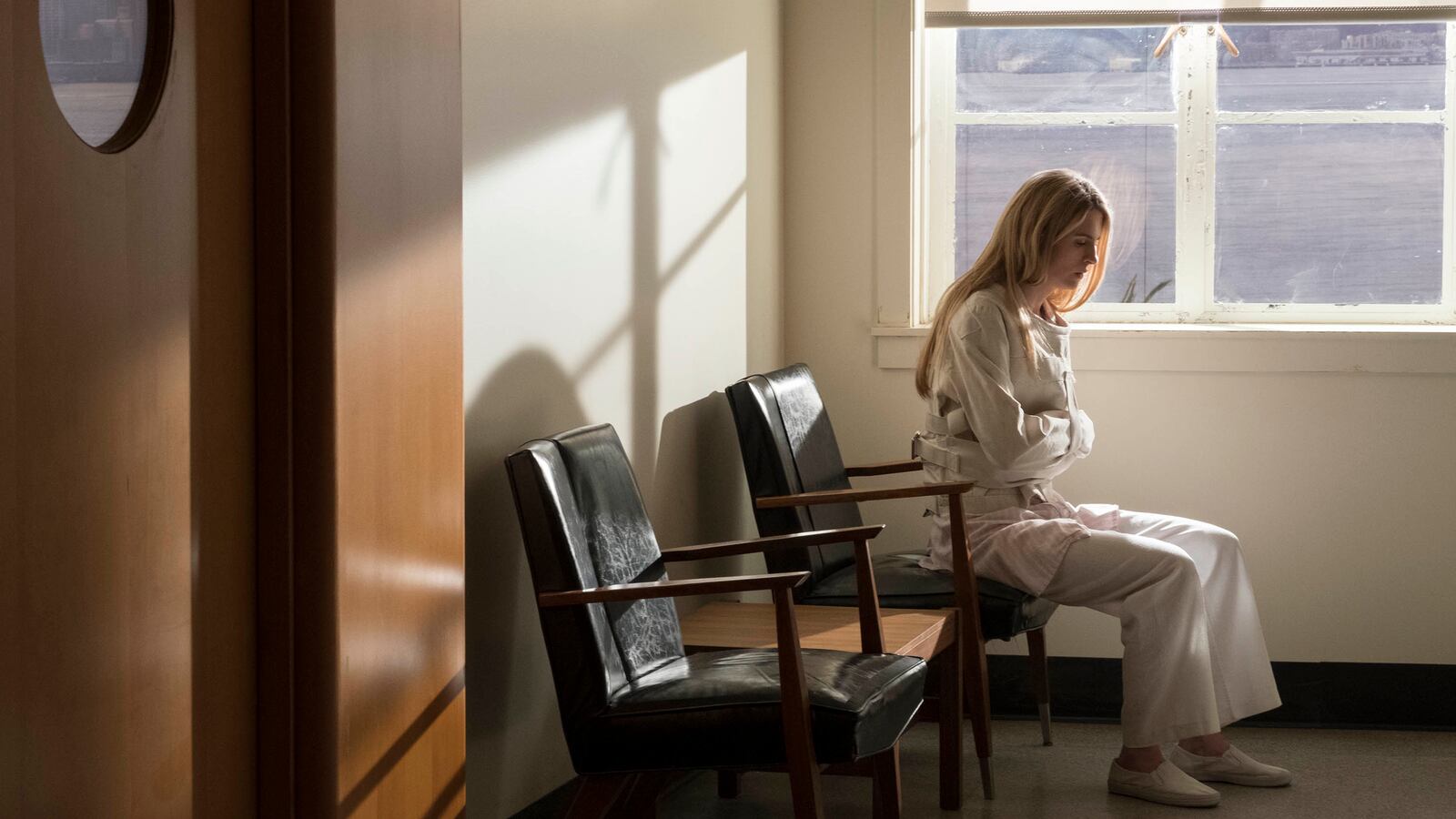The galaxy brain of Netflix dramas, Brit Marling and Zal Batmanglij’s sci-fi opus The OA is still like nothing else on TV. It is as beguiling as it is bonkers—maddening, profound, hilariously humorless, easy to make fun of, yet deeply moving and humane. Its long-delayed season two, which premiered on Netflix Friday, is also much scarier than its first—leaning full-tilt into a Hill House-style haunting in one horror-show episode—and an improvement, too. That’s the good news. The bad news is that though this second season ably spins a fascinating new mystery from the show’s expanding weirdo mythology, it sort of fumbles the finish too, just like last time.
The eight-episode journey to that final scene’s gonzo revelation is a satisfying enough ride in itself, though, at least for those of us here to watch a big-hearted, daydreamy show reach new emotional heights. The nuttier particulars of this universe—Russian alter egos, shadowy tech conspiracies, dancing robots, a haunted house, Zendaya, the talking octopus, I won’t say more—are glorious for how bananas they feel in a straight-faced story about faith. But they amount to less than the show’s (much simpler) beating heart: four teenage boys and their teacher, grieving the loss of their friend, OA (Brit Marling).
Prairie, the “original angel,” was shot through the heart at the end of season one, the sole casualty of a school shooting thwarted by the boys and their teacher in a deranged act of bravery: a performance of “the five movements,” a jerking, hissing dance sequence as loony as it is beautiful. The movements hold a supernatural power, especially around death. And as season two opens, we learn that Prairie has transported to another dimension and landed in the body of an alternate self. Here, Nina Azarova (Prairie’s birth name) never had to survive a bus crash, never lost her eyesight, and lived a luxurious adult life in San Francisco as a kinky Russian heiress with a maybe-evil tech billionaire boyfriend.
Much of that first episode, though, follows a seemingly unrelated plot about a private investigator tracking down a missing girl. That one takes its time in warming up but actor Kingsley Ben-Adir’s charismatic skepticism is so welcome here, you hardly notice. Prairie’s new life, meanwhile, begins to deteriorate in familiar ways: She soon finds herself a captive of sorts, again under scientist Hap’s (Jason Isaac) control. Her soulmate, Homer (Emory Cohen), is again close enough to touch yet impossibly far. Her fellow captives Renata (Paz Vega), Rachel (Sharon Van Etten), and Scott (Will Brill) again turn to OA for a way out, though she can’t save all of them. The teenagers in Prairie’s original dimension are again faced with two choices: either they believe in her, or they walk away.
I’ve seen people gripe about all that repetition in a show so fiercely original. To me, it just feels like a function of this show’s brand of optimism, one that hopes for and therefore imagines conscious patterns connecting events in our lives we can’t make sense of. It’s a kind of spirituality that stops short of religion then veers left at science fiction into the concept of multiverses. Sincere and hopelessly romantic, though hardly groundbreaking, sure. Still, the way The OA uses the idea to inspire, challenge, or extinguish faith among its cast of lonely, directionless characters is something I found touching.
A central image this season is a rose stained-glass window, an arrangement of repeating patterns, slightly different each time, in some larger design. It’s not supposed to be subtle. Prairie herself, in conversation with a skeptic, spells out the show’s intention: “I’m asking you to imagine that reality is stranger and more complicated than you or I could possibly know. And sometimes we get glimpses of it in dreams, or déjà vu, when you feel like what’s happening now has happened before. Well, maybe it has—but a little differently, and somewhere else.”
There’s a yearning in those lines and a melancholy to this season that seems to resonate especially in this moment. Maybe it’s because these are cynical times. But the way The OA treats every grasp at connection and futile leap of faith with dignity feels like a corrective, as does how matter-of-factly inclusive the show is. Its most striking moments are driven by compassion; it’s what kept me invested during even its loopiest moments (and this season introduces concepts like “tree internet” and “the invisible river,” so that’s saying a lot). It’s only in this season’s final 20 or so minutes that it sets all that aside and turns to something a little flashier, a little emptier, less connected to everything that’s come before.
Not that the final twist didn’t make me howl with both delight and disbelief; it ascends to a level of lunacy I really can only respect. The show benefits up until then from expanding its mythology organically, answering last season’s ambiguities, and following its addictive central mystery one spook and revelation at a time. Its last scene might be a leap too far for some, but what comes before, for my part at least, outweighs it.
It’s a ripe time for wondering where the forks in our lives’ roads have led us versus where we could have been; Russian Doll and The Good Place also use the idea of multiverses to explore the nature of human connection and what we owe to one another. Our current reality can feel fractured, crazy-making, wrong; a show like The OA reminds us it’s natural to feel out of place, and tries to instill a little faith in what’s to come. More, it wants us to really feel our feelings about it without the cover of jokes or irony. It’s a cathartic gem of a show, and I truly hope it sticks around.
Obsessed with The OA? Join The Binge, our Facebook group for streaming superfans.







